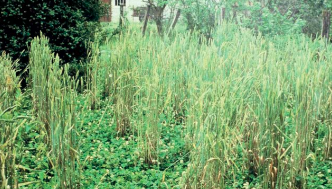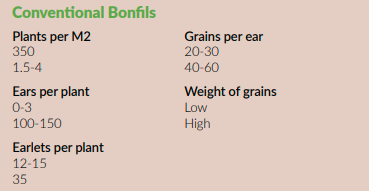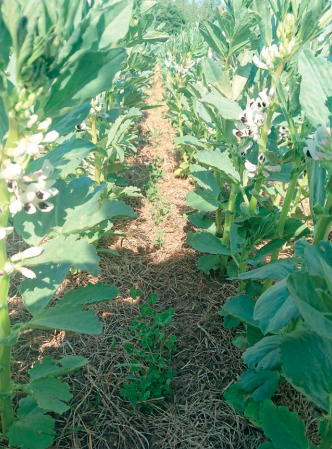
A few weeks ago I was really falling out of love with growing wheat. Like all difficult times you get the chance to re-assess what you do and I believe we need a complete re-think of wheat growing in the UK. Since my last article in the December edition it continued to rain, about 680mm between the end of September and the beginning of March. The deluge gave us a final goodbye on March the 7th by raining all day and flooding the farm. It has been a difficult time watching crops go under water and springs appear and kill patches of wheat.
Now we have having a very dry spring and crops are looking stressed due to poor roots systems. Please put your hands up if you farm on heavy ground and are relaxed about planting high seed rates of wheat at the end of October this year? Then (if its survived the winter) apply a fungicide 4 times to keep out disease, also apply large amounts of nitrogen fertiliser to try and meet milling specifications and finally spend £100/ha on herbicides to try and fail to control grass weeds. I cannot imagine many hands being raised. (apart from the input suppliers).
Thinking of wheat bushes with 100 tillers
While drilling spring crops I was listening to a podcast by John Kempf where he was interviewing Dr Norman Uphoff about The System of Rice Intensification. In developing countries, they have re-designed Rice cultivation with dramatic yield increases and lower input costs. This has been done by planting very-low seed rates, so each plant has plenty of room above and below ground and so rooting and tillering is increased. They use as much compost at planting as possible to improve the soil biology. There are other changes they made but these two mentioned are the most important here. Since their success with Rice they have transferred the theories to other crops including Wheat.

So, I started to think how we could adapt this system to the UK and remembered about the Marc Bonfils method of wheat growing where he was getting remarkably high yields with similar techniques. I also remembered a picture of wheat shown by Neil Fuller where he had planted wheat at 10 plants per square meter and the plants had 100 tillers. In summary I believe we should be planting wheat as early as possible with very-low seed rates. At the same time apply compost or an extract at planting.
This will give us wheat bushes with large root systems and many tillers which will find nutrients from deep in the soil and so require a lot less nutrition. Due to the open canopy disease will be less of an issue. This would ideally be on an already established permanent legume living mulch.

Marc Bonfils was achieving 15t/ha with a similar system with very low inputs. So why didn’t it take off? My guess is scalability. The open canopy would give weeds more of a chance and they were probably hand hoed. With Weeder Robots on the horizon, interrow hoes and hooded sprayers this hopefully will not be an issue. I am also hearing people screaming “what about BYDV or Wheat heading in December?” My answer is a large healthy plant will not be attacked by aphids and variety choice is key. A lot of modern varieties have spring genetics within their genome. A variety with winter only genetics would have to be chosen.
Will it work? I do not know but it cannot be any worse than the direction wheat growing is going. I think we need to try. How good a wheat crop looks around here is directly correlated to how early it was drilled, the earlier the better. Marc Bonfils was planting his wheat into his standing wheat crop in June as wheat tillers best at 20-25 degrees Celsius. The table below shows the differences between the Bonfils Method and Conventional

The spring crops overall established well. They are looking good considering the conditions, but they are rushing through the growth stages. We have 5 different intercropping trials in our spring crops. (pictures attached).

The bean intercrop trials are with PGRO. We are testing undersowing clover in beans, different row configurations to see if there any differences in disease and a copy of the bean/ oat seed rate ratio trial we did last year. With the Diversify project we are trialing different rates of oats mixed with either peas or lentils and see how low we can go and still get a good enough scaffolding to reduce lodging. All these trials should hopefully give us some valuable information for next years growing season which will hopefully be better than 2020!
Happy harvesting.